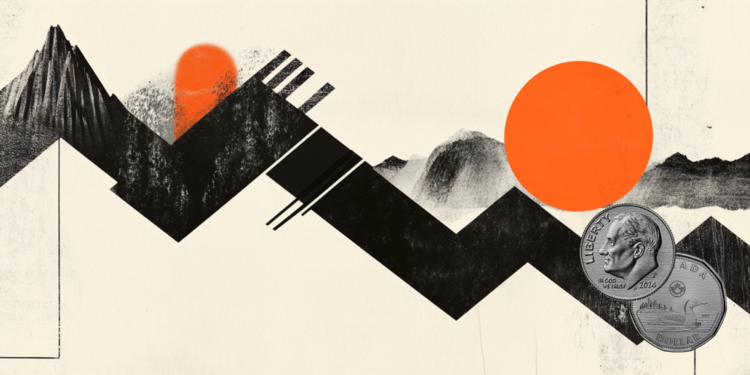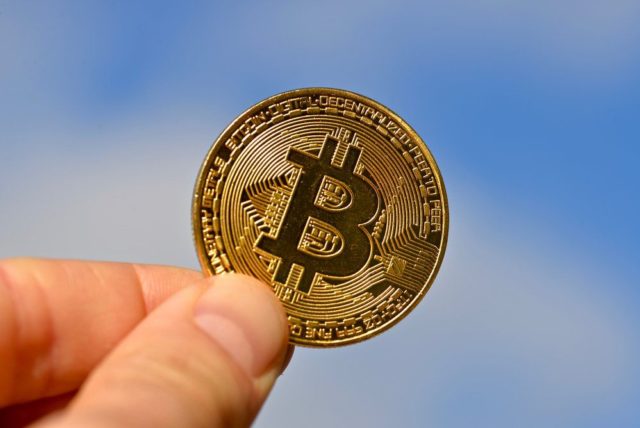- The Reserve Bank of New Zealand is likely to keep the interest rate at 5.50% in February.
- RBNZ Governor Adrian Orr's press conference and updated macroeconomic forecasts will capture the market's attention.
- The New Zealand Dollar is set for a spike in volatility following the RBNZ Governor's words.
The Reserve Bank of New Zealand (RBNZ) will convene its first monetary meeting of 2024 today, Wednesday. RBNZ board members are expected to keep the Official Cash Rate (OCR) at 5.50% for the fifth consecutive meeting. However, some economists expect the February meeting to be a “live” event, with upside risks to a rate hike.
The New Zealand Dollar (NZD) will experience high volatility if the RBNZ raises rates by surprise or holds its holdings.
What to expect from the RBNZ interest rate decision?
The Reserve Bank of New Zealand will publish its first monetary policy statement (MPS) of this year, including updated economic forecasts, alongside the interest rate announcement on Wednesday at 01:00 GMT. RBNZ Governor Adrian Orr's press conference will take place at 02:00 GMT.
Data released by Stats NZ showed New Zealand's annual Consumer Price Index (CPI) rose 4.7% in the December quarter, the smallest annual rise in more than two years. However, the figure remained above the RBNZ target of 1.0%-3.0%.
Despite CPI data indicating a disinflationary situation in the New Zealand economy, the Australian and New Zealand Banking Group (ANZ) revised its rate forecast earlier this month, noting that “we now expect the RBNZ to raise the rate.” OCR rate 25 basis points (bp) in February and April, placing it at 6.0%”.
“We don't think the RBNZ is confident it has done enough to deliver on its inflation mandate,” ANZ said.
However, the country's falling inflation expectations pushed markets to reassess their expectations for the RBNZ interest rate outlook. According to the RBNZ's quarterly survey, two-year inflation expectations – considered the timeframe in which the RBNZ's measures will filter through to prices – fell to 2.5% from 2.76% in the December quarter.
Additionally, Stats NZ Selected Price Indices (SPI) showed the annual rise in inflation fell to 6.8% in January, from 7% in December.
At its November policy meeting, the RBNZ stated that “if inflationary pressures were stronger than expected, the OCR would likely need to be raised further,” adding that “the Monetary Policy Committee agreed that interest rates would have to be maintained at a restrictive level for a sustained period of time.” The central bank forecast a maximum OCR of 5.69% in the September 2024 quarter, leaving the door ajar for another rate hike this year.
Previewing the RBNZ's policy announcement, BBH analysts noted: “The Reserve Bank of New Zealand meets on Wednesday and is expected to keep rates steady at 5.50%. At the same time, it will release its Policy Statement. Monetary Policy with updated macroeconomic forecasts. Markets see around a 25% chance of a 25 basis point hike this week and attention will focus on updated rate path projections.”
“We doubt the RBNZ's revised projections rule out a further rise in policy rates due to stronger-than-expected non-tradable inflation and private sector wage growth in the fourth quarter. Therefore, the New Zealand dollar risks are skewed to the upside,” the analysts added.
How will the RBNZ decision affect the New Zealand dollar?
If the RBNZ surprises markets with a 25 basis point rate hike or raises the top rate forecast to 6.0%, the New Zealand Dollar is likely to encounter a fresh wave of buying against the US Dollar. In case of hawkish surprises, NZD/USD could stage a solid bounce towards the 0.6250 level.
On the other hand, if RBNZ Governor Orr's comments are balanced, suggesting a view of “higher for longer” interest rates, the NZD/USD correction is expected to gain traction, sending the pair tumbling towards the 0.6100 barrier. Furthermore, a moderate pause by the central bank could also spell the end for the Kiwi.
Dhwani Mehta, Senior Analyst at FXStreet, offers a brief technical outlook for New Zealand Dollar trading on RBNZ policy announcements: “The NZD/USD pair is fighting the critical 50-day Simple Moving Average (SMA) at 0. 6180 in its downward correction. However, the 14-day Relative Strength Index (RSI) continues to hold above the midline, suggesting that risks remain skewed to the upside for the pair.”
“The immediate upside hurdle is seen at the round level of 0.6220, above which the July 27 high of 0.6274 will come into play. NZD buyers will then target the figure of 0.6300. For the Conversely, a sustained move below the 50-day SMA at 0.6180 could open the doors to a test of the 0.6100 signal. Further south, the 200-day SMA at 0.6075 could come to the rescue of the NZD/USD,” adds Dhwani.
RBNZ FAQ
What is the Reserve Bank of New Zealand?
The Reserve Bank of New Zealand (RBNZ) is the country's central bank. Its economic objectives are to achieve and maintain price stability – achieved when inflation, as measured by the Consumer Price Index (CPI), falls within the range between 1% and 3% – and to support maximum sustainable employment.
How does the Reserve Bank of New Zealand's monetary policy influence the New Zealand Dollar?
The Monetary Policy Committee (MPC) of the Reserve Bank of New Zealand (RBNZ) decides the appropriate level of the Official Cash Rate (OCR) in accordance with its objectives. When inflation is above target, the bank will try to control it by raising its key OCR, making it more expensive for households and businesses to borrow money and thus cooling the economy. Higher interest rates are generally positive for the New Zealand Dollar (NZD) as they generate higher returns, making the country a more attractive place for investors. On the contrary, lower interest rates tend to weaken the NZD.
Why does the Reserve Bank of New Zealand care about jobs?
Employment is important to the Reserve Bank of New Zealand (RBNZ) because a tight labor market can fuel inflation. The RBNZ's goal of “maximum sustainable employment” is defined as the highest use of labor resources that can be sustained over time without creating an acceleration of inflation. “When employment is at its maximum sustainable level, there will be low and stable inflation. However, if employment is above the maximum sustainable level for too long, it will eventually cause prices to rise increasingly rapidly, requiring the MPC to raise interest rates to keep inflation under control,” the bank says. central.
What is quantitative easing (QE)?
In extreme situations, the Reserve Bank of New Zealand (RBNZ) may implement a monetary policy tool called Quantitative Easing. QE is the process by which the RBNZ prints local currency and uses it to purchase assets (usually government or corporate bonds) from banks and other financial institutions with the aim of increasing the domestic money supply and stimulating economic activity. QE generally results in a weaker New Zealand Dollar (NZD). QE is a last resort when simply lowering interest rates is unlikely to achieve the central bank's objectives. The RBNZ used it during the Covid-19 pandemic.
Source: Fx Street
I am Joshua Winder, a senior-level journalist and editor at World Stock Market. I specialize in covering news related to the stock market and economic trends. With more than 8 years of experience in this field, I have become an expert in financial reporting.







